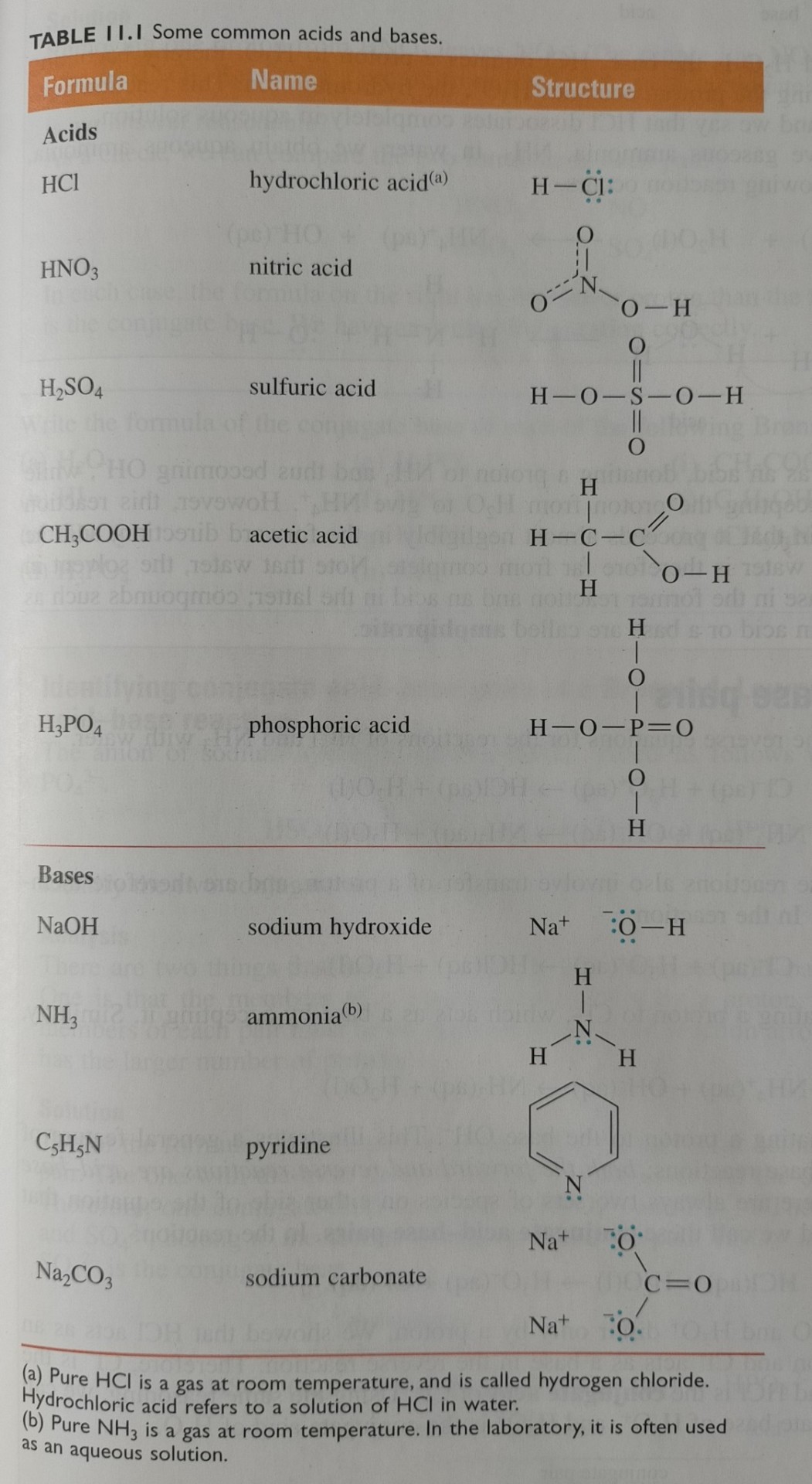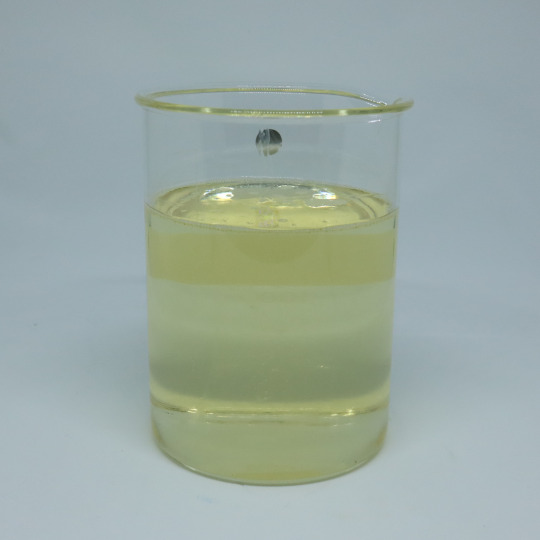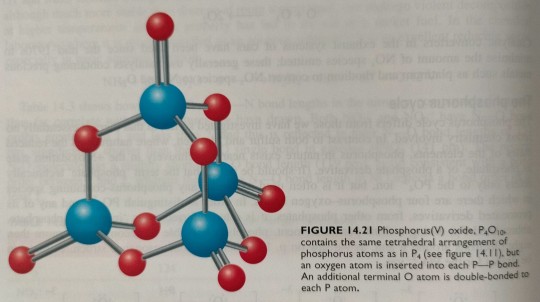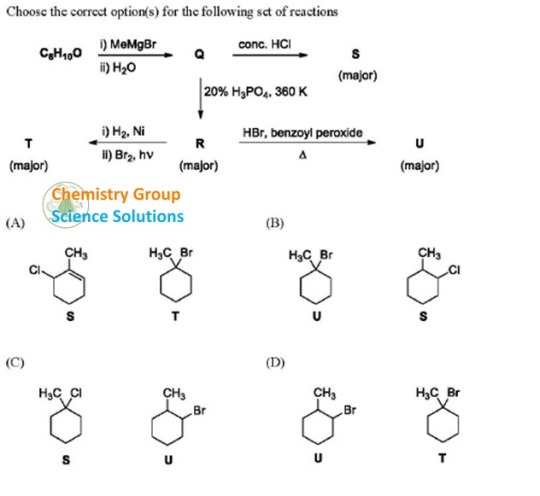#phosphoric acid
Text

594 notes
·
View notes
Text
Table 11.1 lists a number of common acids and bases that would be found in any chemistry laboratory. (...) It can be seen from the structures of the acids in table 11.1 that, in some cases, there is more than one very polar H-X bond, and these acids can donate more than one proton.

"Chemistry" 2e - Blackman, A., Bottle, S., Schmid, S., Mocerino, M., Wille, U.
#book quotes#chemistry#nonfiction#textbook#acid#base#proton#polyprotic acid#hydrochloric acid#hydrogen chloride#nitric acid#sulfuric acid#acetic acid#phosphoric acid#sodium hydroxide#ammonia#pyridine#sodium carbonate
3 notes
·
View notes
Text

1 note
·
View note
Text
Nutriplus Beauty Shot Colagen 15 buc - Farmasi | Farmasi Romania
https://farmasi.ro/ua000007/product/detail/nutriplus-beauty-shot-colagen-15-buc?pid=1000848
Începe-ți călătoria către o variantă a ta mult mai strălucitoare!Supliment care acționează din interior pentru o piele cu aspect mult mai sănătosFormulă extinsă cu mai multe beneficiiAmestecul delicios conține colagen de tip I și III, acid hialuronic, vitamina C, E, B5, B6 și biotinăMaximizați rezultatele…

View On WordPress
#Acidity Regulator#Beet Root Red Color#Citric Acid#Coenzyme Q10#Cranberry#D-Biotin#D-Pantothenate Calcium#Dl- alpha tocopheryl acetate#FARMASI ROMANIA#fruit)#hyaluronic acid#Hydrolyzed Collagen#L-Ascorbic Acid#Natural Flavoring#Phosphoric Acid#Potassium Sorbate#Preservatives#Pyridoxine hydrochloride#Sodium Benzoate#Sucralose#Sweetener#Vaccinium macrocarpon Aiton#Vitamin B5#VITAMIN B6#Vitamin C#Vitamin E#Water
0 notes
Text
Sulfuric acid can donate two protons and is called a diprotic acid whereas phosphoric acid, which can donate three protons, is a triprotic acid.
"Chemistry" 2e - Blackman, A., Bottle, S., Schmid, S., Mocerino, M., Wille, U.
#book quote#chemistry#nonfiction#textbook#acid#sulfuric acid#phosphoric acid#proton#sulfur#phosphorus
0 notes
Text
The Science Behind Success: Additives in Phosphoric Acid Plant Operations
In the world of industrial chemistry, the production of phosphoric acid plays a vital role. This versatile compound is a key component in various applications, ranging from fertilizers to food additives. Behind the scenes of successful phosphoric acid plant operations lies an intricate web of science and engineering, with additives emerging as a crucial factor in optimizing production processes. In this comprehensive article, we delve into the depths of phosphoric acid production, uncovering the significance of additives and their role in achieving operational excellence.
Introduction
Phosphoric acid, a colorless and odorless compound, is a cornerstone of several industries. Its demand has been steadily growing, leading manufacturers to seek innovative ways to enhance production efficiency without compromising on quality. In this pursuit, additives have emerged as essential tools that contribute to both the quality and quantity of phosphoric acid production.
Understanding Phosphoric Acid Production
Phosphoric acid is typically produced through the wet acid process, wherein phosphate rock reacts with sulfuric acid to yield phosphoric acid and other byproducts. This complex reaction involves multiple stages and intricate chemical equilibria. Achieving optimal conditions in this process is paramount to ensure the highest yield and purity of the end product.
The Role of Additives
Additives, often in small quantities, are incorporated into the production process to achieve specific goals. These can range from improving the reaction kinetics to reducing undesirable side reactions. Additives act as catalysts, accelerators, inhibitors, and modifiers, altering the chemical landscape to favor the desired outcomes.
Types of Additives and Their Functions
Inhibitors and Corrosion Suppressors
Inhibitors play a critical role in preventing unwanted reactions that could lead to equipment corrosion and product contamination. By forming a protective layer on metal surfaces, inhibitors ensure the longevity of plant equipment and maintain the purity of phosphoric acid.
Defoamers and Antifoaming Agents
Foaming can hinder operations by reducing reaction efficiency and causing overflow issues. Defoamers and antifoaming agents mitigate this problem by destabilizing foam bubbles and preventing their formation, thus promoting smoother operations.
Filtration Aids
Filtration is a pivotal step in separating the solid byproducts from the liquid phosphoric acid. Filtration aids enhance this process by improving the filterability of the solids, leading to quicker and more efficient separation.
pH Modifiers
Maintaining the optimal pH range is crucial for the progression of chemical reactions. pH modifiers are used to control acidity, ensuring that the reactions proceed at the desired rate and yield the highest quality phosphoric acid.
Optimizing Efficiency through Additives
The integration of additives into phosphoric acid plant operations goes beyond addressing specific challenges. It extends to the overall enhancement of efficiency, productivity, and cost-effectiveness. Additives enable operators to fine-tune various parameters and achieve greater control over the production process.
Challenges and Solutions
Compatibility Issues
One of the challenges in using additives is ensuring their compatibility with the complex chemical environment of phosphoric acid production. Thorough testing and evaluation are necessary to prevent unforeseen reactions and ensure the desired effects are achieved.
Environmental Considerations
As the industry moves towards sustainable practices, the choice of additives becomes crucial. Environmentally friendly additives that have minimal ecological impact are gaining traction, aligning with the global push for greener processes.
Conclusion
The science behind the success of phosphoric acid plant operations is intricately linked with the strategic use of additives. These compounds, carefully selected and precisely applied, enable manufacturers to overcome challenges, enhance efficiency, and achieve excellence in production. As the industry continues to evolve, the role of additives will remain pivotal, driving innovation and shaping the future of phosphoric acid manufacturing.

#phosphoric acid plant#phosphate#phosphoric#phosphate production#phosphoric acid#phosphoric chemicals#phosphoric additives
1 note
·
View note
Text
yk the parts where dr christian does the demonstrations abt like sugar and grease and chemicals to each of the ppl in the diet swap? yeah those rlly get to me which i guess is the point
#but yeah rn im worried abt phosphoric acid and my teeth#i mean it doesnt make me stop drinking my diet dr pepper or coffee but now i drink it with a small side of worry#des rambles
2 notes
·
View notes
Text
The Role of Phosphoric Acid in the Food Industry
Phosphoric acid is a colorless, odorless, and tasteless inorganic acid that has been widely used in the food industry for many years. It is a key ingredient in many popular food and beverage products, such as soft drinks, jams, jellies, and processed cheeses. In this blog, we will discuss the role of phosphoric acid in the food industry and highlight some of the top phosphoric acid suppliers, exporters, and distributors in Saudi Arabia.
Firstly, let's look at the role of phosphoric acid in the food industry. Phosphoric acid is primarily used as a food additive to provide tartness or acidity to processed foods and beverages. It is also used as a preservative to prevent spoilage and extend the shelf life of food products. In addition, phosphoric acid is used in the production of phosphate salts, which are used in a wide range of food products, such as baking powder, cheese, and meats.
Another important use of phosphoric acid in the food industry is in the production of soft drinks. It is a key ingredient in many popular carbonated beverages, providing the distinctive tart flavor and acidity that consumers love. Phosphoric acid is also used as a chelating agent, which helps to remove metals from the water used in soft drink production, preventing the formation of unwanted flavors and odors.
Now, let's look at some of the top phosphoric acid suppliers, exporters, and distributors in Saudi Arabia. These companies offer high-quality phosphoric acid products that meet the strictest food safety and quality standards.
SABIC: SABIC is one of the largest chemical producers in the world, and a leading supplier of phosphoric acid in Saudi Arabia. The company's phosphoric acid products are widely used in the food, pharmaceutical, and agriculture industries.
Maaden: Maaden is a mining and minerals company that produces high-quality phosphoric acid products for the food industry. The company's products are exported to customers around the world, including major food and beverage manufacturers.
Arabian Chemical Company: Arabian Chemical Company is a leading distributor of phosphoric acid products in Saudi Arabia. The company offers a wide range of high-quality phosphoric acid products, including food-grade and technical-grade varieties.
In conclusion, phosphoric acid plays a critical role in the food industry, providing tartness, acidity, and preservative properties to a wide range of processed foods and beverages. If you are in need of phosphoric acid products for your food manufacturing operations, be sure to consider the top phosphoric acid suppliers, exporters, and distributors in Saudi Arabia, including SABIC, Maaden, and Arabian Chemical Company.
#Phosphoric acid suppliers in Saudi Arabia#Phosphoric acid exporters in Saudi Arabia#Phosphoric acid distributors in Saudi Arabia#palvifze
3 notes
·
View notes
Text
Phosphoric Acid Prices Trend, Monitor, News, Analytics & Forecast | ChemAnalyst

Phosphoric acid prices, indicative of the cost of this vital chemical compound, are subject to fluctuations influenced by various factors such as global market dynamics, industrial demand, and production costs. Understanding these price movements entails a comprehensive analysis of supply and demand dynamics, raw material availability, and macroeconomic indicators.
The pricing of phosphoric acid is significantly influenced by the balance between supply and demand within industries such as agriculture, food and beverage, and chemical manufacturing. Phosphoric acid, valued for its role as a key ingredient in fertilizers, food additives, and industrial chemicals, is essential in various applications ranging from crop nutrition to food processing and metal surface treatment. Disruptions in the supply chain, such as fluctuations in phosphate rock availability, production capacity, or transportation logistics, can impact the availability and cost of phosphoric acid, thereby influencing its market price.
Industrial demand plays a pivotal role in determining phosphoric acid prices. Industries such as agriculture rely heavily on phosphoric acid for its essential role in soil fertility and plant nutrition, while the food and beverage sector utilizes it as a flavor enhancer, acidity regulator, and preservative. Fluctuations in demand from these sectors, influenced by factors such as weather patterns, agricultural practices, and consumer preferences, can lead to price volatility for phosphoric acid.
Get Real-Time Phosphoric Acid Prices: https://www.chemanalyst.com/Pricing-data/phosphoric-acid-1162
Raw material costs significantly impact phosphoric acid prices. The price of raw materials such as phosphate rock and sulfuric acid, which are used in phosphoric acid production, can fluctuate due to changes in global supply and demand dynamics, mining regulations, and energy costs. Any significant increase in raw material costs can translate into higher production costs for phosphoric acid manufacturers, thereby exerting upward pressure on prices.
Macroeconomic indicators, such as GDP growth, agricultural output, and food consumption trends, can indirectly affect phosphoric acid prices by influencing overall demand for agricultural inputs and food products. Economic expansions tend to drive demand for phosphoric acid-intensive products such as fertilizers and processed foods, thereby supporting higher prices. Conversely, economic downturns or uncertainties may lead to reduced demand and downward pressure on phosphoric acid prices.
Regulatory changes and quality standards also play a role in shaping phosphoric acid prices. Government regulations on food safety, environmental standards, and industrial chemical usage can impact production costs and market access for phosphoric acid manufacturers. Compliance with these regulations may require investments in research, testing, and quality control measures, influencing pricing dynamics.
Looking ahead, several factors are expected to continue influencing phosphoric acid prices. Continued growth in global population and changing dietary patterns, coupled with increasing demand for agricultural products and processed foods, is likely to drive sustained demand for phosphoric acid. Moreover, advancements in fertilizer technology, changes in agricultural practices, and shifts in global trade dynamics could lead to changes in market dynamics and price levels for phosphoric acid.
In conclusion, phosphoric acid prices are subject to a complex interplay of factors including supply and demand dynamics, industrial trends, raw material costs, regulatory changes, and macroeconomic indicators. Stakeholders in industries reliant on phosphoric acid, such as agriculture, food and beverage, and chemical manufacturing, must closely monitor these factors to anticipate price movements and make informed decisions. As industries evolve and regulatory requirements change, navigating the dynamic landscape of phosphoric acid pricing will remain a key challenge for industry participants.
Get Real-Time Phosphoric Acid Prices: https://www.chemanalyst.com/Pricing-data/phosphoric-acid-1162
GmbH — S-01, 2.floor, Subbelrather Straße,
15a Cologne, 50823, Germany
Call: +49–221–6505–8833
Email: [email protected]
Website: https://www.chemanalyst.com
0 notes
Text
Phosphoric Acid Market Size, Share, Trends, Forecast Report
0 notes
Text
#Phosphorous Acid Market Size#Phosphorous Acid Market Share#Phosphorous Acid Market Trends#Phosphorous Acid Market Price
0 notes
Video
磷酸Phosphoric acid CAS 7664 38 2 - H3PO4 #export #china #chemical #ferti...
#youtube#Phosphoric acid CAS: 7664-38-2 Chemical formula: H3PO4 UN 1805 Phosphoric acid orthophosphoric acid Anhydrous phosphoric acid The main use
0 notes
Text
Controlled combustion of white phosphorus gives phosphorus(V) oxide, P4O10 (figure 14.21) and addition of water to this generates high-purity phosphoric acid:
P4O10(s) + 6H2O(l) → 4H3PO4(aq)

"Chemistry" 2e - Blackman, A., Bottle, S., Schmid, S., Mocerino, M., Wille, U.
#book quotes#chemistry#nonfiction#textbook#combustion#phosphorus#white phosphorus#phosphorus oxide#water#purity#phosphoric acid#chemical reactions
0 notes
Text

#benzaldehyde#hydrogen bromide#benzoyl peroxide#hydrogen#nickel#bromine#phosphoric acid#methyl magnesium bromide#water#chemistry#solutions#methyl bromide cyclohexane
1 note
·
View note
Text
Computational Modeling Aspect of Fuel Cells: A Continuous Powerhouse
Fuel cells are called continuous powerhouses because it is a device that does not store energy but runs continuously to produce electricity as long as the fuel is provided. The byproduct of the fuel cell is water, hence the “clean energy” or “zero carbon emission” technology.
#fuel cell#fluid dynamics#continuous powerhouses#zero carbon emission#clean energy#Anode and cathode reactions for PEMFC#Polymer Electrolyte Membrane Fuel Cell (PEMFC)#Direct Methanol Fuel Cells (DMFC)#Alkaline Fuel Cells (AFC)#Phosphoric Acid Fuel Cells (PAFC)#energy#Electricity generation
0 notes
Text


22 January 1876
#18760122#French Academy of Sciences#On New Thermic Researches on Citric Acid#On Stripping the Leaves from the Sugar Beet#On the Periodicity of Great Atmospheric Movements#On the Mechanism and the Causes of Changes of Color in the Chameleon#On the Electrolysis of Bodies of the Aromatic Series#On Organic Matters in Sea-Salt#On the Construction of Lightning-rods#On Certain New Elements to be Discovered#On the Action of Monohydrated and Trihydrated Phosphoric Acids on the Coagulation of the Blood#How to Make Farming Pay#The Chemistry of Agriculture#Scientific American#Lessons in Mechanical Drawing
0 notes